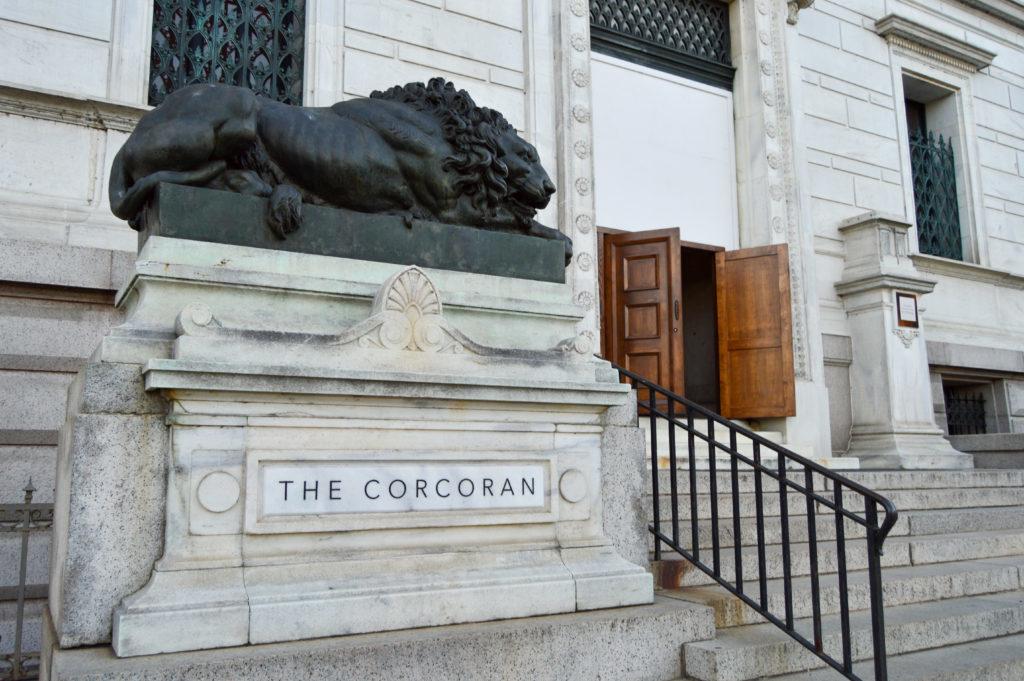Full-time arts faculty from the Corcoran School of the Arts and Design and the Columbian College of Arts and Sciences drafted and voted to amend the set of rules that determine how the Corcoran functions earlier this year.
The school’s bylaws, which determine everything from teaching hours to degree requirements and grading policies, will apply to all degree-granting arts programs and arts faculty including those in CCAS, when the document goes into effect in July.
Sanjit Sethi, the director of the Corcoran, initially said the faculty in GW’s two art programs would be housed in one department by the fall of 2016, but arts programs in CCAS have not yet been absorbed into the Corcoran. Sethi said faculty in both departments drafted the bylaws to prepare to consolidate departments by the fall.
Sethi declined to provide the bylaws to The Hatchet, saying they are not public.
Sethi said the bylaws have been changed to accommodate the absorption of the dance, interior design, theater and music programs into the Corcoran.
“Corcoran leadership worked with faculty and the transitional governance committee members of which came from all of the different departments over the past year to create this new bylaw structure that will best support the creation of an impactful and supportive governance structure for the Corcoran School,” Sethi said in an email.
Sethi said all full-time Corcoran faculty met three times in January to analyze the current bylaw document line by line. Thirty-two amendments were added and it was approved by a two-thirds all-faculty vote, he said.
“It was an exhaustive process,” Sethi said at the Faculty Senate meeting. “It was sort of representative of all the different programs that are to be involved.”
Sethi said he views bylaws as critical in creating a cultural campus and a creative community within the Corcoran, and that the bylaws should change over time.
“It’s one of the more fundamental steps of community building that I see,” he said. “I see bylaws as a real living document and something that should really adapt as an institution adapts.”
Sethi said the new bylaws will allow for a smooth transition of programs from CCAS to Corcoran, including the incorporation of dance, music, theater, fine arts, museum studies and interior architecture programs.
Eugene Montague, an assistant professor of music, said faculty in both the Corcoran and CCAS discussed the new guidelines at meetings over the past year and that Sethi visited departments to get feedback on the changes. The final bylaw vote was cast via email earlier this year, he said.
Montague said the revised bylaws reflect the Corcoran’s shifts since GW absorbed the school in 2014, and should give professors and students more opportunities to work across disciplines.
“[The Corcoran] promises to offer many options for new curricular and programmatic developments. The new bylaws give us a necessary structural path for development in these areas,” he said.
Maida Withers, a professor of dance, said Sethi formed a committee of faculty representatives from music, theatre, museum studies and visual arts programs to propose bylaws for the school’s governance. She said the faculty from the involved programs, in Corcoran and CCAS, reviewed the guidelines and made changes before giving them a final seal of approval.
Withers said the merger still has challenges to overcome to go before the fall. The Corcoran’s Flagg building needs renovations, the new Corcoran bylaws must be compatible with former CCAS rules and the legal aspects of the process need to be carefully managed.
She added that the real work for the Corcoran will be integrating new programs and hiring more faculty members.
“The harder question than the bylaws is the organization of the programs at the Corcoran,” Withers said. “I had hoped for larger integration of faculty instead of leaving the same groups of people in the same setting.”





